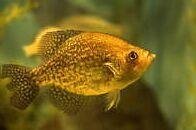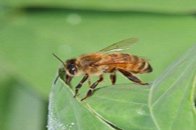How to Report Pesticide Incidents Involving Wildlife or the Environment
Incidents can be reported for all wildlife, including mammals, birds, fish, shellfish, reptiles, amphibians, insects including bees and other pollinators, and plants. Environmental incidents may be reported for soil and water contamination that is suspected or known to be related to pesticide exposures.
Do not touch or disturb dead animals. Poisoned animals that are still alive may be taken to a veterinarian or wildlife rehabilitation center for treatment. It is best to call the local animal control or Humane Society office for assistance. Rescue of ill animals should be attempted only by trained personnel who are properly protected from pesticide contamination and are knowledgeable about state and federal regulations related to the collection of wildlife. In addition, injured animals can be frightened and aggressive.
There are several ways to report an incident:
- If you are concerned about a possible illegal use of a pesticide, please contact your state pesticide regulatory agency. States generally have primary enforcement responsibility for pesticide misuse violations and for investigating possible instances of pesticide misuse. For incidents involving fish or wildlife, contact your state’s department that is responsible for protecting fish, game, and natural resources.
- File a report with the product's manufacturer, who is required by law to submit reports of adverse effects to EPA. You can find their contact information on the product label.
- To report an incident directly, please email EPA. Your email should include the product name and EPA Reg. No., along with the location, date, and description of the incident. EPA will store your information in its Incident Data System and it will be compiled with other incidents for EPA to analyze when taking a regulatory action.
- If you suspect that there has been a Federal Insecticide, Fungicide, and Rodenticide Act (FIFRA) violation, you may, submit a report to EPA.
- You may also contact the National Pesticide Information Center's (NPIC) Ecological Incident Reporting Portal. This portal collects information from government organizations, the public, academia, wildlife rehabilitation centers, conservation societies, and beekeepers. NPIC provides summary reports to EPA on incidents; however, it does not collect information for enforcement purposes nor does it provide EPA with any personal identifying information. Learn about specific reporting options for possible pollinator incidents.




